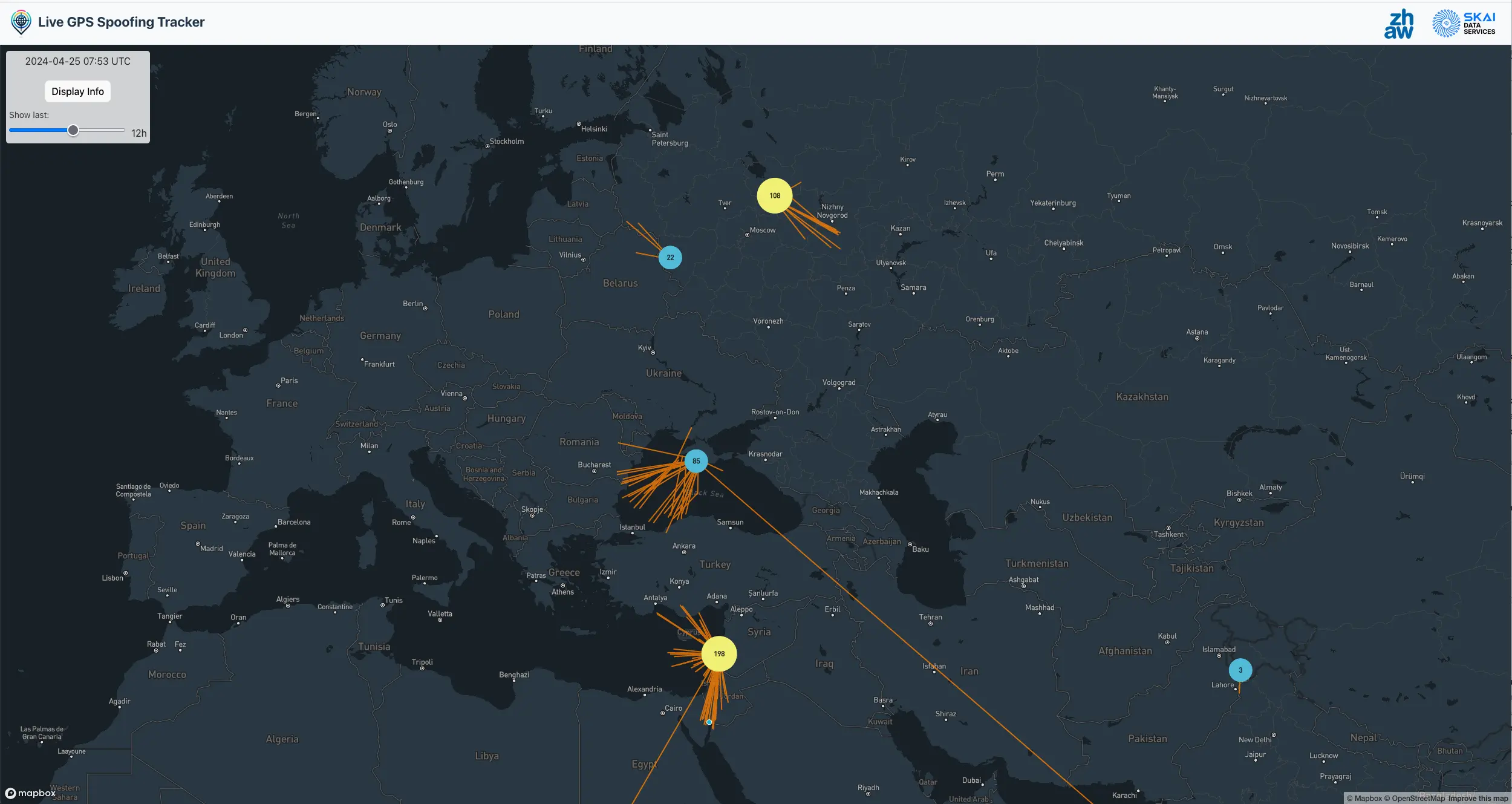Detecting falsified GPS signals in real time: ZHAW spin-off SkAI creates interactive map for air traffic
Falsified GPS signals are appearing ever more frequently near crisis and war zones. At present, this is especially true over the eastern Mediterranean. This also impacts air traffic, which can lead to serious safety problems in extreme situations. The ZHAW spin-off SkAI has now created an interactive map that shows the falsified GPS signals live.

Alongside their work at the ZHAW Centre for Aviation (ZAV), the two ZHAW researchers Raphael Monstein and Benoit Figuet run the ZHAW spin-off SkAI Data Services, which offers data-based solutions and consultancy services for airlines. In light of an ever-increasing number of falsified GPS signals, a phenomenon referred to as GPS spoofing, especially in conflict zones, the spin-off has come up with a solution that allows for them to be displayed in real time in the form of the Live GPS Spoofing Tracker webpage. “GPS jamming has been an issue in the region around the eastern Mediterranean for a number of years now. Since October 2023, GPS spoofing has also increasingly been observed there,” explains Michael Felux, team leader of the Aviation Infrastructure research group at the ZAV, who was involved in developing the solution. “The problem with GPS spoofing is that when these falsified signals appear, the aircraft’s GPS system assumes that it is in a different location to where it actually is,” explains Raphael Monstein, a researcher in the fields of flight mechanics and flight control systems. “While the pilots know their real position thanks to a series of redundant navigation systems, the fact that the ADS-B system, which monitors flight movements within the airspace, is fed by GPS signals represents a problem. If these signals are incorrect, this can lead to issues with localising the aircraft from the ground,” says Michael Felux. Depending on the extent of the spoofing, this can give rise to safety relevant situations in the cockpit: “If a series of error messages suddenly flash up, this can quickly cause confusion and the pilots have difficulty in deciphering which information is relevant and which isn’t,” explains Raphael Monstein in describing the problem. “For instance, if ground proximity warnings, which instruct the pilots to pull the aircraft up, are triggered, these are signals that should not actually be ignored during normal flight operations,” says Michael Felix. “There have also been reports of clocks going backwards. Falsified GPS signals can thus lead to problems at many points in the aircraft.”
Tactical military reasons the likely main cause of GPS spoofing
There are almost always war-related tactical reasons behind the falsified GPS signals. According to the two researchers, GPS spoofing in the eastern Mediterranean region has increased since the terrorist attacks by the Islamist Palestinian organisation Hamas on 7 October 2023. Most aircraft are spoofed in a manner that means they assume they are at an airport. However, the target of the falsified GPS signals is not so much planes but rather primarily commercial drones. Geofencing is used to prevent them from entering prohibited airspace, such as airports.
Positive feedback from airlines
As air traffic has only recently been affected by GPS spoofing and the full extent was previously unknown, there was demand from the aviation sector for such an overview with real-time data. This motivated the SkAI team to develop such a webpage. “We thought that we could give it a try, also as a kind of advertisement for our spin-off. We quickly found out that you can see these signals in real time and thought that it would definitely be useful for airlines to check live where spoofing hotspots are currently popping up.” Since the launch of the webpage on 4 April, SkAI has already received a great deal of positive feedback from airlines, including Swiss and American Airlines. Nevertheless, it remains unclear how the project will continue. “More pages will probably follow soon. Above all, we want to show that we were the first to offer such an overview.” says Raphael Monstein.